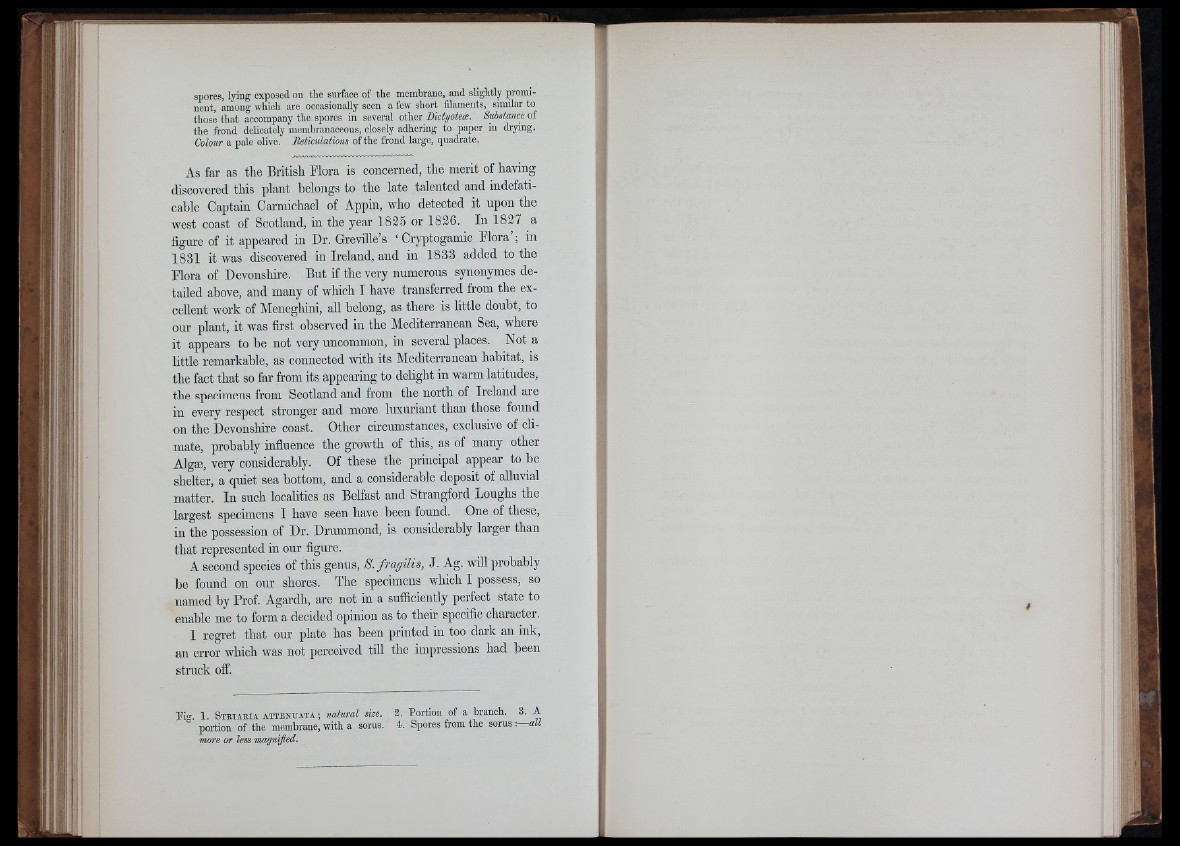
spores, lying exposed on the surface of the membrane, and slightly prominent,
among which are occasionally seen a few short filaments, similar to^
those that accompany the spores in several other Dktyoteoe. Substance ot
the frond delicately membranaceous, closely adhering to paper in drying.
Colour a pale oUve. Réticulations of the frond large, quadrate.
As far as the British Flora is concerned, the merit of having
discovered this plant belongs to the late talented and indefati-
cable Captain Carmichael of Appin, who detected it upon the
west coast of Scotland, in the year 1825 or 1826. In 1827 a
figure of it appeared in Dr. Greville’s ‘Cryptogamic Flora’; in
1831 it was discovered in Ireland, and in 1833 added to the
Flora of Devonshire. But if the very numerous synonymes detailed
above, and many of which I have transferred from the excellent
work of Meneghini, all belong, as there is little doubt, to
our plant, it was first observed in the Mediterranean Sea, where
it appears to be not very uncommon, in several places. Not a
little remarkable, as connected with its Mediterranean habitat, is
the fact that so far from its appearing to delight in warm latitudes,
the specimens from Scotland and from the north of Ireland are
in every respect stronger and more luxuriant than those found
on the Devonshire coast. Other circumstances, exclusive of climate,
probably influence the growth of this, as of many other
Algæ, very considerably. Of these the principal appear to be
shelter, a quiet sea bottom, and a considerable deposit of alluvial
matter. In such localities as Belfast and Strangford Loughs the
largest specimens I have seen have been found. One of these,
in the possession of Dr. Drummond, is considerably larger than
that represented in our figure.
A second species of this genus, S. fragilis, J. Ag. will probably
be found on our shores. The specimens which I possess, so
named by Prof. Agardh, are not in a sufiiciently perfect state to
enable me to form a decided opinion as to their specific character.
I regi-et that our plate has been printed in too dark an ink,
an error which was not perceived tiU the impressions had been
struck off.
■ V
Ì :
Fio- 1 S t b i a r i a ATTENUATA ; natural size. 3. Portion of a branch. 3. A
portion of tbe membrane, witb a sorus. 4. Spores from tbe sorus -.— all